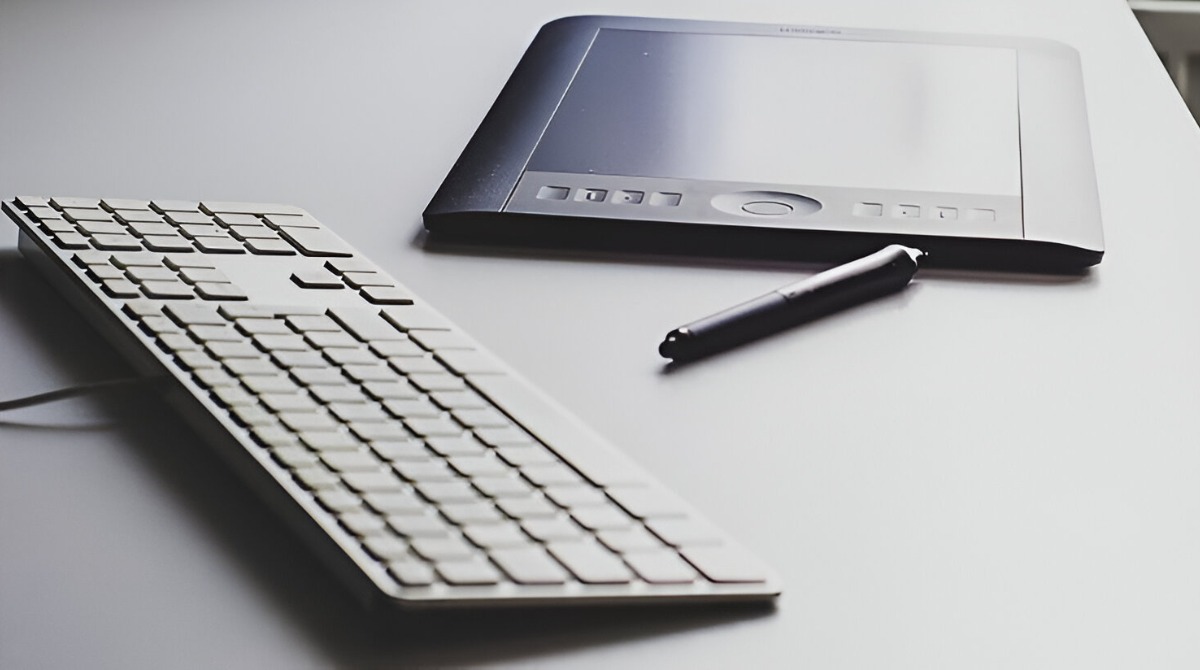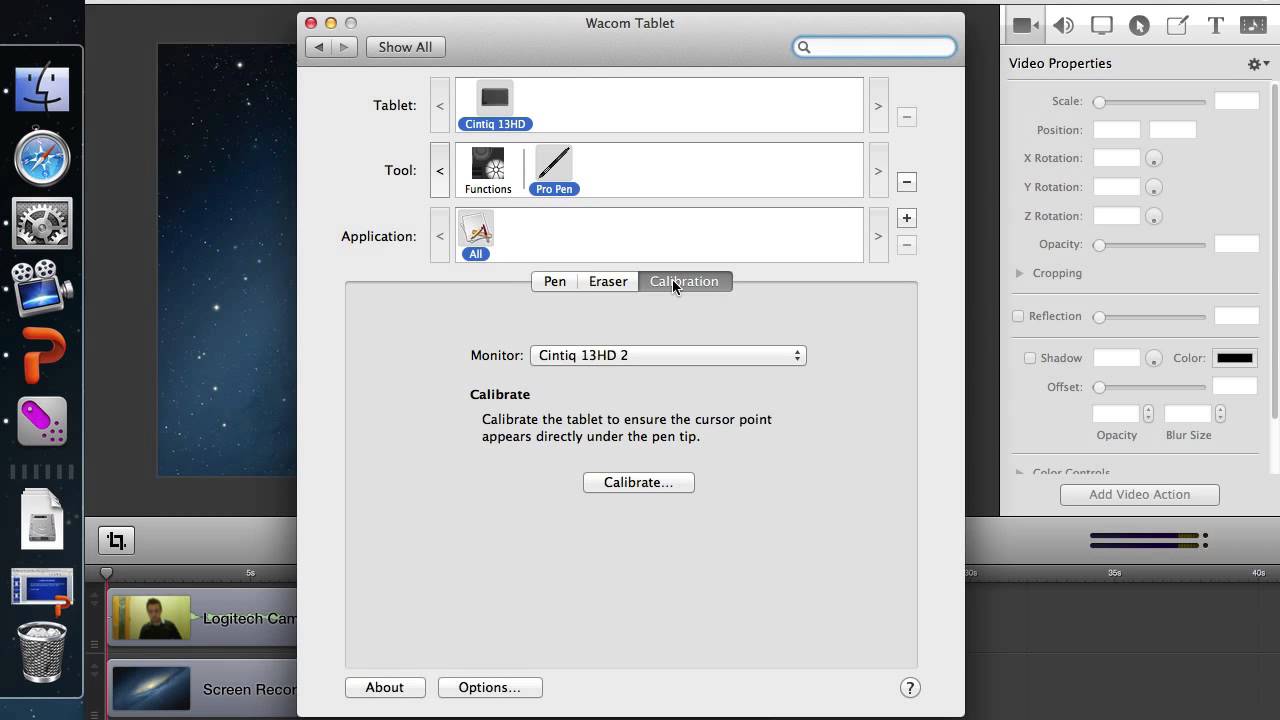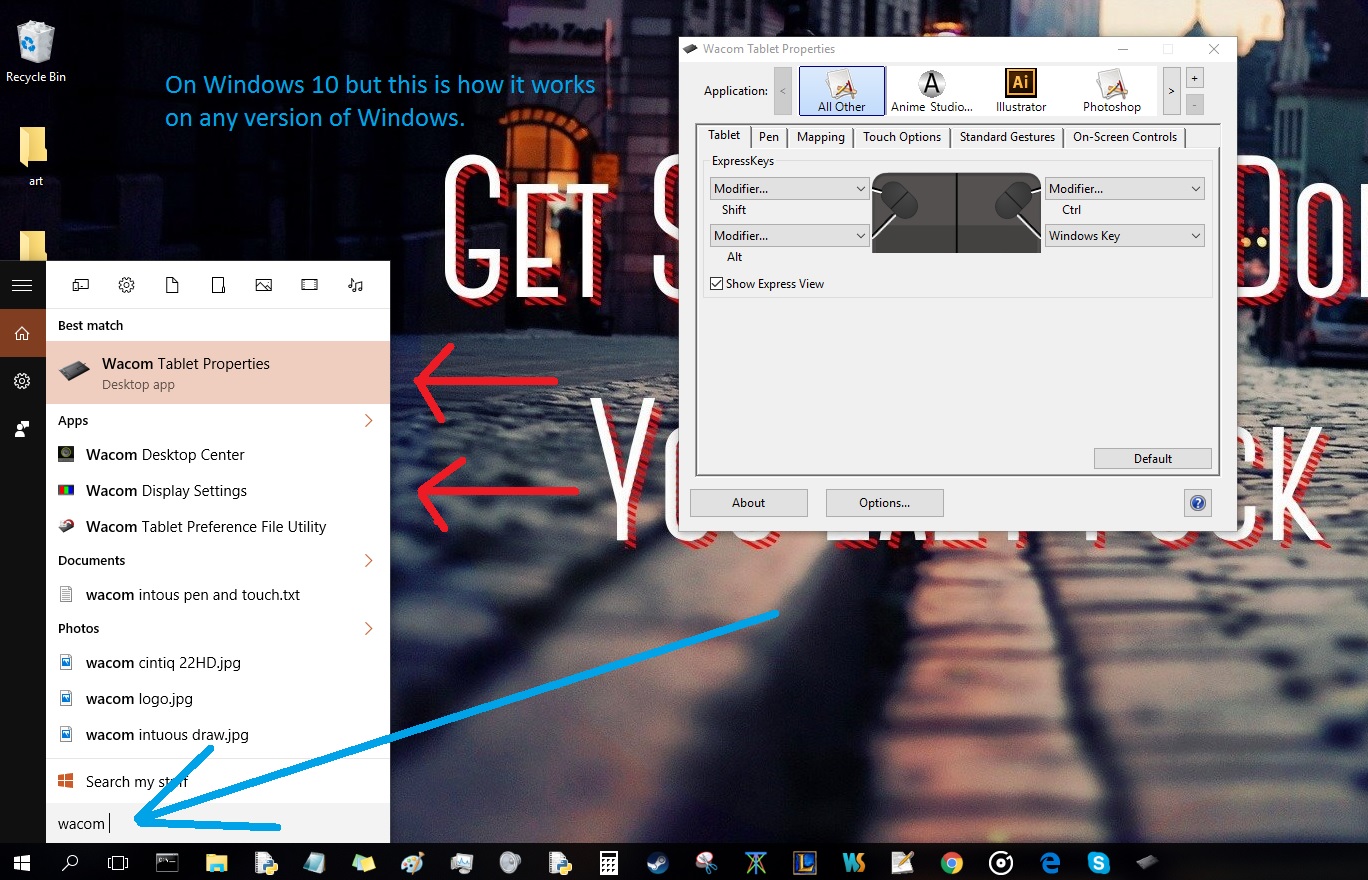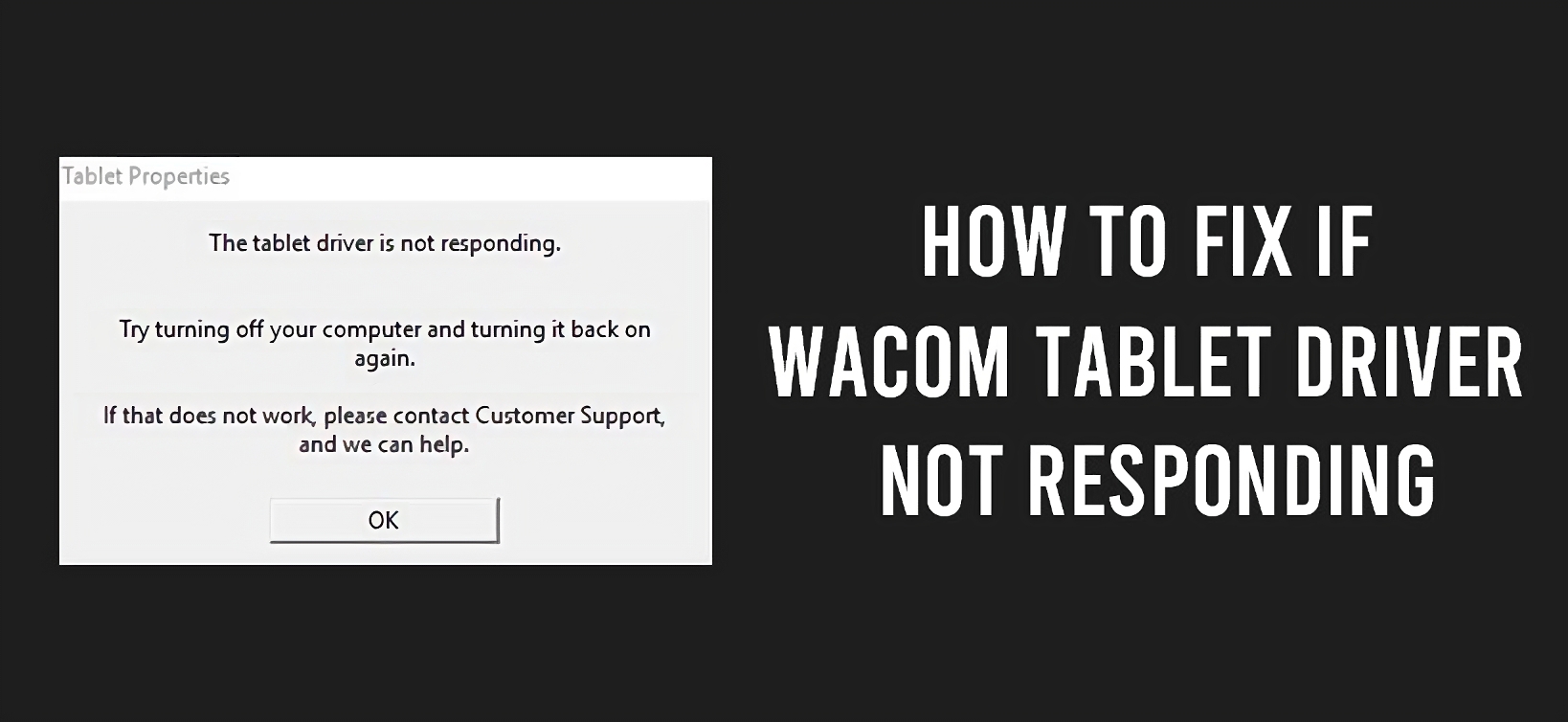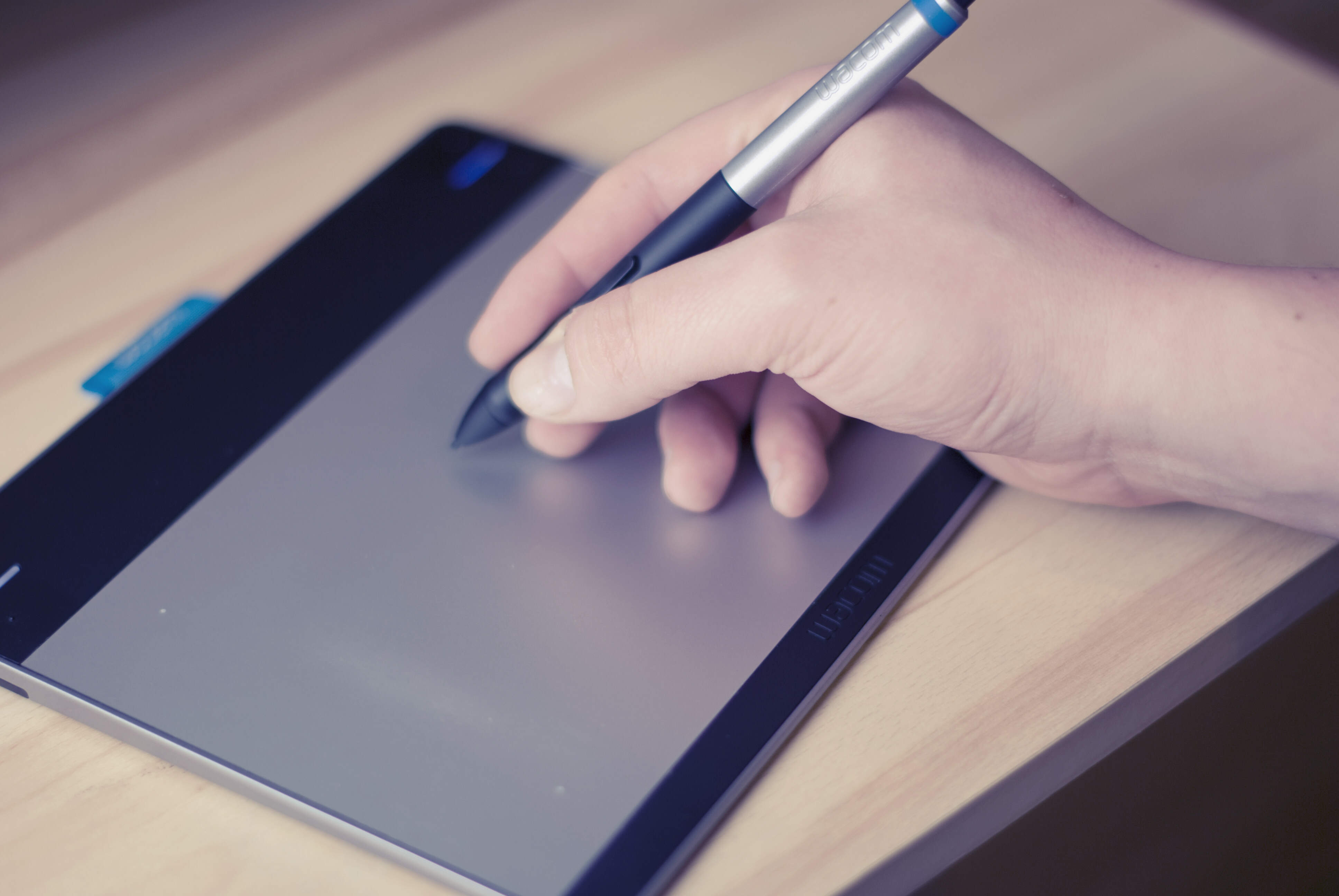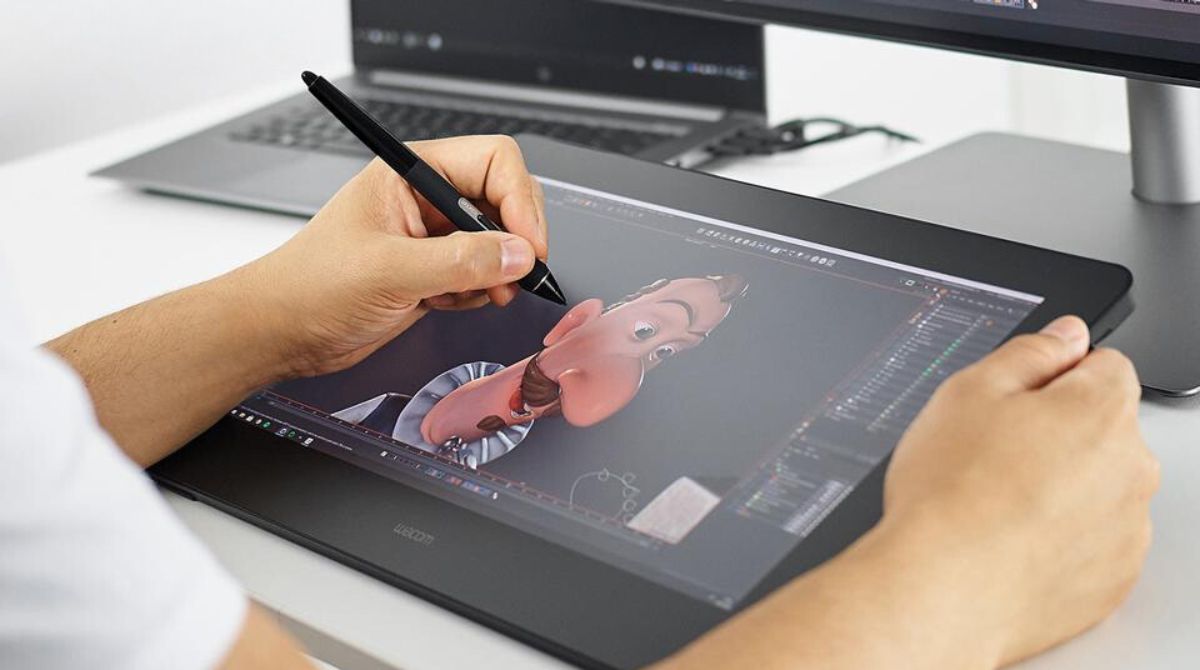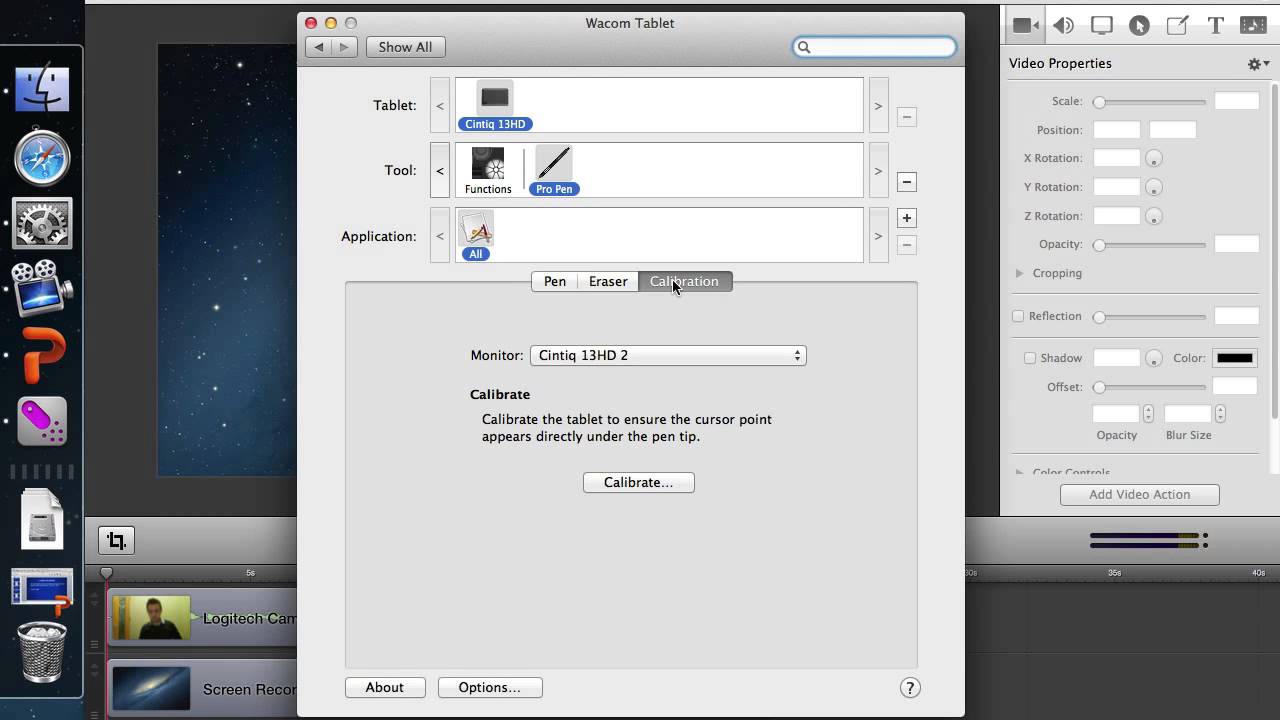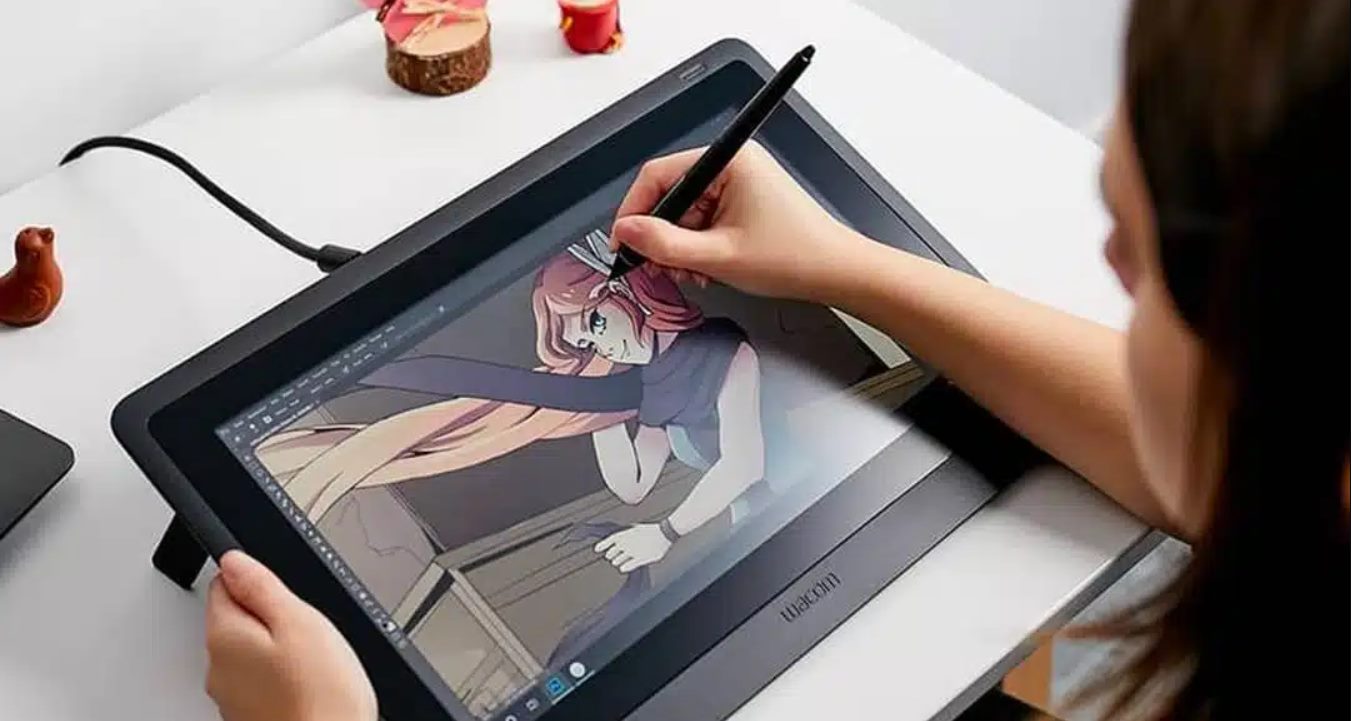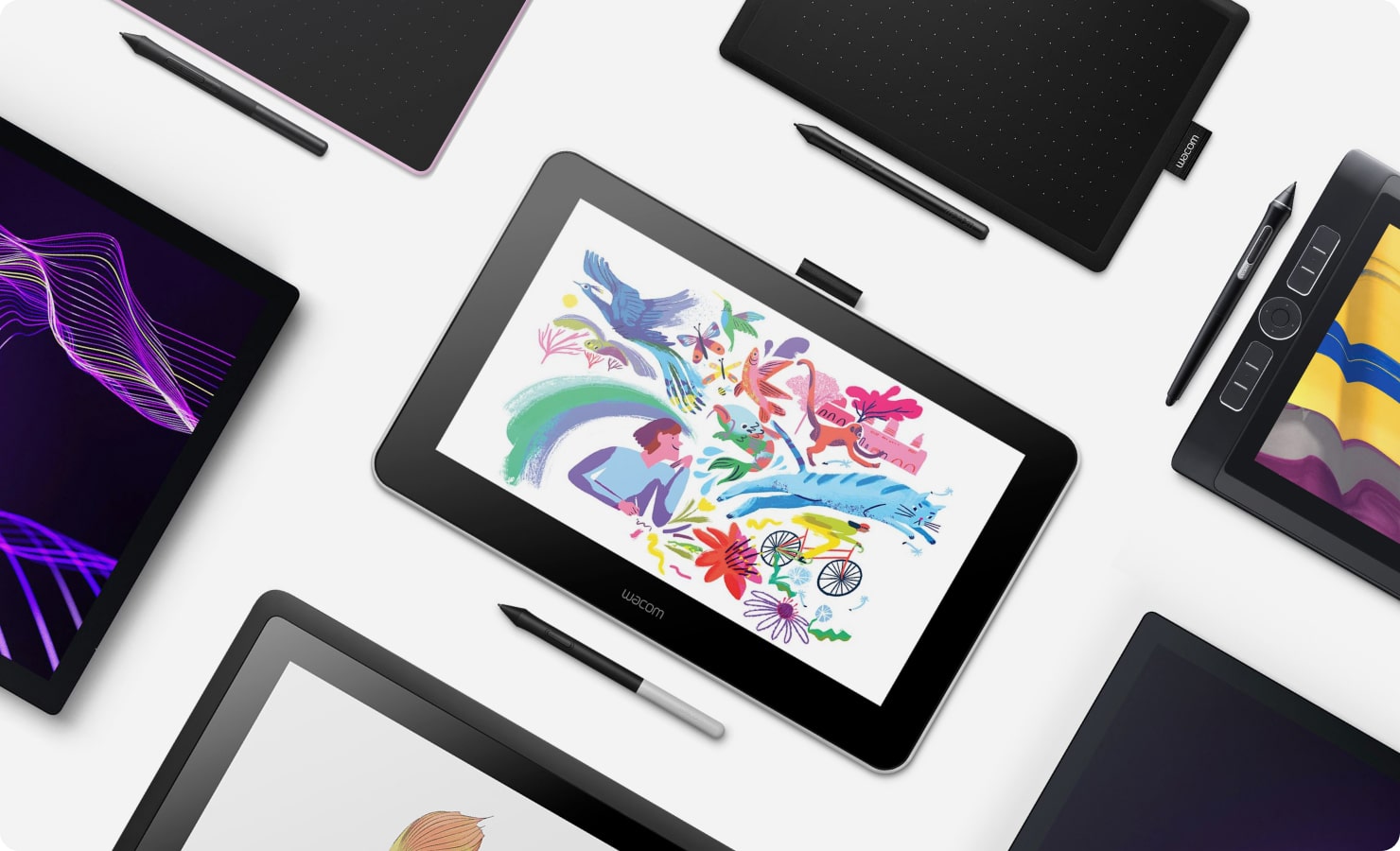Introduction
Wacom tablets are a popular choice for digital artists, designers, and photographers, offering an intuitive and precise way to create and edit artwork on a computer. However, despite their reputation for reliability, there may be occasions when your Wacom tablet stops working or fails to respond as expected. This can be frustrating, especially when you have important work to complete or deadlines to meet.
There could be several reasons why your Wacom tablet is not working properly. It could be due to driver issues, connectivity problems, compatibility with your operating system, software conflicts, or even hardware malfunctions. Understanding these common issues can help you troubleshoot and resolve the problem effectively.
In this article, we will explore the common problems that can affect the functionality of Wacom tablets and provide troubleshooting tips to fix them. Whether you are a professional artist or a casual user, these solutions will help you get your Wacom tablet up and running again, allowing you to continue your creative endeavors.
Common Issues with Wacom Tablets
While Wacom tablets are known for their reliability, there are a few common issues that users may encounter. Understanding these issues can help you identify the cause of the problem and find a suitable solution. Here are some of the most frequent issues that can affect the performance of Wacom tablets:
- Driver Issues: Outdated or incompatible drivers can cause your Wacom tablet to malfunction. This can result in issues like pen lag, cursor movement problems, or a complete failure to respond. Regularly updating your drivers is crucial to ensure optimal performance.
- Connectivity Problems: Faulty USB cables, loose connections, or problems with the USB port can lead to connectivity issues with your Wacom tablet. These issues can disrupt the communication between your tablet and computer, causing it to stop working.
- Compatibility with Operating Systems: Sometimes, Wacom tablets may not be fully compatible with certain operating systems, especially when using the latest versions. This can result in various compatibility issues, such as the tablet not being recognized or certain features not working correctly.
- Software Conflicts: Conflicts with other software installed on your computer can interfere with the functionality of your Wacom tablet. Antivirus programs, drawing software, or even system updates can potentially cause issues that affect the tablet’s performance.
- Hardware Malfunctions: Though less common, hardware malfunctions can occur with Wacom tablets. Problems with the pen, tablet buttons, or the device itself can arise over time, leading to unresponsive or erratic behavior.
By becoming familiar with these common issues, you can better troubleshoot and resolve any problems you may face with your Wacom tablet. In the following sections, we will discuss practical solutions and troubleshooting steps to help you overcome these issues and get your tablet working again.
Driver Issues
One of the most common issues that can affect the functionality of a Wacom tablet is driver-related problems. Drivers act as the intermediary between your tablet and computer, translating your input into commands the computer can understand. If your drivers are outdated or incompatible, it can result in various issues. Here’s how you can troubleshoot driver issues:
- Update or Reinstall Drivers: The first step is to ensure that you have the latest drivers installed for your Wacom tablet. Visit the official Wacom website and navigate to the Drivers & Downloads section. Locate your tablet model and download the latest driver version compatible with your operating system. Install the driver and follow any prompts to complete the process. If you already have the latest driver installed, try reinstalling it to refresh the software configuration.
- Remove Conflicting Drivers: In some cases, conflicting drivers from other devices on your computer can interfere with your Wacom tablet. To resolve this, navigate to the Device Manager (on Windows) or System Preferences (on Mac) and locate the respective driver. Right-click (Windows) or Control-click (Mac) on the driver and select “Uninstall” or “Remove.” Restart your computer and reinstall the Wacom tablet driver.
- Check for Firmware Updates: In addition to updating the driver, it’s important to also check for firmware updates for your specific Wacom tablet model. Firmware updates provide enhancements and bug fixes that can improve the overall performance and stability of your device.
- Use Driver Utility Tools: To ensure that your drivers are functioning optimally, you can utilize driver utility tools. These tools help to identify any outdated or conflicting drivers, and they can automatically update or fix them. Examples of popular driver utility tools include Driver Booster, Driver Talent, and Driver Easy.
By following these steps, you can troubleshoot and resolve driver-related issues that could be causing problems with your Wacom tablet. However, if the issue persists, you may need to explore other potential causes such as connectivity or software conflicts.
Connectivity Problems
Connectivity issues can greatly impact the performance of your Wacom tablet. If the tablet is not properly connected to your computer, it may not work at all or exhibit intermittent issues. Here are some troubleshooting steps to resolve connectivity problems:
- Check USB Cable and Port: Begin by inspecting the USB cable connecting your tablet to your computer. Ensure that the cable is securely plugged into both the tablet and the USB port of your computer. If the cable appears damaged or frayed, try using a different USB cable. Additionally, check the USB port on your computer for any signs of damage or debris. Use a different USB port if necessary.
- Restart Computer and Tablet: Sometimes, a simple restart can resolve connectivity issues. Turn off your computer and tablet, disconnect the tablet from the computer, and then power off both devices. After a few minutes, reconnect the tablet to the computer and power them back on. This can help reset the connection and establish a stable connection.
- Update USB Drivers: Outdated or faulty USB drivers can also cause connectivity problems. Visit the official website of your computer’s manufacturer and locate the USB drivers for your specific model. Download and install any available updates. This can help ensure that your computer’s USB ports are functioning properly.
- Try a Different Computer and USB Port: If possible, test your Wacom tablet on a different computer. This can help determine if the issue is specific to your computer or the tablet itself. Additionally, try connecting the tablet to a different USB port on your computer. Sometimes, certain USB ports may have compatibility or power issues.
- Reset Tablet: If none of the above steps solve the connectivity problem, you can try performing a tablet reset. The exact method for resetting a Wacom tablet varies depending on the model. Refer to the user manual or the official Wacom website for instructions on how to perform a reset. Note that a reset may revert the tablet back to its default settings, so make sure to backup any important settings or preferences beforehand.
By troubleshooting the connectivity issues using the above steps, you can ensure a stable and responsive connection between your Wacom tablet and computer. If the problem persists, it may be necessary to investigate other potential causes, such as compatibility with the operating system or software conflicts.
Compatibility with Operating Systems
Compatibility issues with the operating system can impact the functionality of your Wacom tablet. Updates to the operating system or using the latest versions may result in compatibility conflicts. Here’s how you can troubleshoot compatibility issues:
- Check System Requirements: Before purchasing a Wacom tablet or updating your operating system, it’s crucial to check the system requirements specified by Wacom. Ensure that your computer meets the minimum requirements to ensure compatibility between the tablet and the operating system.
- Update Wacom Drivers: When upgrading your operating system, it’s essential to update the Wacom tablet drivers to the latest compatible version. Visit the official Wacom website and download the appropriate drivers for the new operating system. Installing the latest drivers can help resolve compatibility issues.
- Use Compatibility Mode: If you’re experiencing compatibility problems after updating the operating system, you can try running the Wacom tablet software in compatibility mode. Right-click on the software’s shortcut or executable file, select “Properties,” navigate to the “Compatibility” tab, and check the box that says “Run this program in compatibility mode for.” Choose the previous version of the operating system that was working fine with your tablet.
- Contact Wacom Support: If you have tried the above steps and still experience compatibility issues, it may be helpful to reach out to Wacom support. They can provide specific guidance based on your tablet model and the operating system version. Visit the official Wacom website and look for the support section to find contact details or helpful resources.
By following these steps, you can troubleshoot and resolve compatibility issues between your Wacom tablet and the operating system. It’s worth noting that compatibility issues can also arise with specific software programs or applications. If you experience issues while using a particular program, it’s advisable to check for software updates or consult the software manufacturer’s support resources.
Software Conflicts
Software conflicts can disrupt the functionality of your Wacom tablet and cause various issues. These conflicts can occur between different software programs or even between the tablet driver and your computer’s operating system. Here are some steps you can take to troubleshoot software conflicts:
- Update Software: Make sure that both your Wacom tablet driver and any relevant software programs you use are up to date. Regularly check for updates from the official Wacom website and the software manufacturer’s website. Newer versions often include bug fixes and compatibility enhancements that can resolve software conflicts.
- Temporarily Disable Antivirus/Firewall: In some cases, antivirus software or firewall settings may interfere with the proper functioning of your Wacom tablet. Temporarily disable these programs and see if your tablet works correctly. If the problem resolves, you can adjust the settings of your antivirus or firewall to allow the tablet software to function without any conflicts.
- Quit Background Applications: Other background applications running on your computer may consume resources or conflict with your Wacom tablet. Close unnecessary applications, especially those that heavily utilize CPU or memory. This can help ensure that the tablet software receives the necessary resources to function smoothly.
- Reinstall Problematic Software: If you suspect that a particular software program is causing conflicts with your Wacom tablet, try reinstalling that specific software. Uninstall the program from your computer, restart the system, and then install the program again. This can often resolve any software conflicts that may have occurred during the initial installation.
- Reset Wacom Preferences: In some cases, conflicts or corrupted preferences within the Wacom tablet software can lead to issues. To address this, you can reset the preferences of the tablet software. Check the official Wacom documentation or support resources for instructions on how to perform a preferences reset.
By troubleshooting software conflicts using the above steps, you can identify and resolve any issues that may be affecting your Wacom tablet’s performance. If the problem persists, it may be necessary to explore other potential causes, such as hardware malfunctions or additional software conflicts.
Hardware Malfunctions
While less common than other issues, hardware malfunctions can occur with Wacom tablets. These malfunctions can range from problems with the pen to issues with the tablet buttons or overall device performance. Here are some steps you can take to troubleshoot potential hardware malfunctions:
- Check Pen Battery: If you are using a battery-powered stylus, ensure that the battery has enough charge. Low battery levels can cause the pen to stop working or exhibit erratic behavior. Replace the battery if necessary and see if the issue persists.
- Inspect Pen and Tablet Surface: Examine the pen for any visible damage, such as broken nibs or loose parts. Additionally, inspect the tablet surface for scratches or any physical damage that may interfere with its functionality. If you find any issues, you may need to replace the pen or contact Wacom support for assistance.
- Test Tablet on Another Computer: Connect your Wacom tablet to another computer and observe its performance. If the tablet works without any issues on a different system, it may indicate a problem with your computer, such as incompatible drivers or software conflicts. In contrast, if the tablet exhibits the same issues on another computer, it’s likely a hardware problem with the tablet itself.
- Try a Different USB Cable and Port: Faulty USB cables or ports can cause hardware malfunctions. Try using a different USB cable or switching to a different USB port on your computer. Alternatively, test the tablet on another computer to see if the issue is resolved. If the problem persists, it may require professional repair or replacement of the tablet.
- Contact Wacom Support: If you have tried the above troubleshooting steps and are still experiencing hardware issues, it’s best to reach out to Wacom support. They can provide further assistance and guidance based on the specific issues you are facing. Visit the official Wacom website and look for the support section to find contact details or helpful resources.
By following these steps, you can troubleshoot the most common hardware malfunctions that can affect the performance of your Wacom tablet. It’s important to note that hardware issues may require professional repair or replacement, especially if the tablet is no longer under warranty. Consulting with Wacom support can provide further guidance on how to address any hardware problems.
Troubleshooting Wacom Tablet Problems
When your Wacom tablet encounters issues, troubleshooting the problem is crucial to get it working again. By following these troubleshooting steps, you can identify and resolve common problems affecting your tablet’s functionality:
- Update or Reinstall Drivers: Outdated or incompatible drivers can cause various issues with your Wacom tablet. Update your drivers to the latest version from the official Wacom website or reinstall them if necessary.
- Check USB Cable and Port: Ensure that the USB cable connecting your tablet to the computer is securely plugged in and free from any damage. Try using a different USB cable or port if connectivity issues persist.
- Verify Compatibility with OS: Check if your Wacom tablet is compatible with your operating system. Update the tablet driver to a compatible version if needed.
- Resolve Software Conflicts: Conflicts with other software programs can interfere with the functionality of your Wacom tablet. Update software, temporarily disable antivirus/firewall, and quit background applications to resolve conflicts.
- Perform Tablet Reset: If all else fails, performing a tablet reset can help restore its default settings, potentially resolving any lingering issues. Consult the user manual or Wacom support resources for instructions on how to perform a reset.
By following these troubleshooting steps, you can address common problems that may affect the performance of your Wacom tablet. However, it’s important to note that if the issue persists or if you encounter hardware malfunctions, it may be necessary to contact Wacom support or seek professional assistance for further guidance and resolution.
Update or Reinstall Drivers
One of the most common solutions to troubleshoot problems with your Wacom tablet is to update or reinstall the drivers. Drivers act as the interface between your tablet and computer, allowing them to communicate effectively. Outdated or incompatible drivers can cause various issues, including pen lag, cursor movement problems, or a complete failure of the tablet to respond. Here’s how you can update or reinstall the drivers:
- Visit the Wacom Website: Go to the official Wacom website and navigate to the Drivers & Downloads section. Locate your tablet model and download the latest version of the driver compatible with your operating system.
- Install the Driver: Once the driver download is complete, double-click on the file to start the installation process. Follow the on-screen instructions to install the driver. Make sure to select the correct options and customize the installation if needed.
- Reboot Your Computer: After the driver installation is complete, it is recommended to reboot your computer. This allows the changes to take effect and ensures a clean start for your Wacom tablet.
- Uninstall and Reinstall the Driver: If you already have the latest driver installed, but still face issues, you can try uninstalling and reinstalling the driver. Go to the Control Panel (Windows) or System Preferences (Mac), locate the Wacom tablet driver, and uninstall it. Afterward, restart your computer, download the latest driver from the Wacom website, and install it again.
- Verify Driver Compatibility: Ensure that the driver you are installing is compatible with your operating system. Some drivers may not work with the latest versions of operating systems, so it is important to double-check compatibility before installation.
By regularly updating your Wacom tablet drivers, you can ensure optimal performance and compatibility with your computer’s operating system. If you continue to experience issues after updating or reinstalling the drivers, it may be necessary to explore other potential causes such as hardware malfunctions or software conflicts.
Check USB Cable and Port
A common cause of connectivity issues with Wacom tablets is problems with the USB cable or port. Faulty cables or loose connections can disrupt the communication between your tablet and computer, leading to various malfunctions or an unresponsive tablet. Here’s how you can troubleshoot USB cable and port issues:
- Inspect the USB Cable: Start by examining the USB cable connecting your Wacom tablet to your computer. Look for any signs of damage such as frayed wires or bent connectors. If you notice any issues, it is advisable to replace the USB cable with a new one.
- Ensure Secure Connection: Make sure that the USB cable is securely plugged into both the tablet and the USB port of your computer. Sometimes, a loose connection can cause intermittent issues or a complete failure of the tablet to function.
- Try a Different USB Port: If you suspect a problem with the USB port, try connecting your Wacom tablet to a different USB port on your computer. This helps determine if the issue is specific to a particular port or if it is a more widespread problem.
- Check for Bent Pins: If you are using a Wacom tablet with a detachable cable, inspect the pins on both the tablet and the cable’s connector. Look for any bent or misaligned pins that may prevent proper connection. Gently straighten any bent pins using a suitable tool or seek professional assistance.
- Test with a Different Cable: If available, try using a different USB cable to connect your Wacom tablet to your computer. This can help determine if the issue lies with the cable or with the tablet itself. If a different cable resolves the problem, consider replacing the original cable.
By troubleshooting the USB cable and port, you can ensure a stable and reliable connection between your Wacom tablet and computer. In case the issue persists, other potential causes such as driver conflicts or software issues should be investigated to identify and address the problem effectively.
Verify Compatibility with OS
Compatibility issues between Wacom tablets and the operating system can lead to various problems and impact the tablet’s functionality. When using the latest versions of operating systems or after performing system updates, it is important to verify the compatibility of your Wacom tablet. Here’s how you can troubleshoot compatibility issues:
- Check System Requirements: Before purchasing a Wacom tablet or updating your operating system, ensure that your computer meets the minimum system requirements specified by Wacom. This includes aspects such as the operating system version, CPU, RAM, and available storage space.
- Update Wacom Drivers: When upgrading your operating system, it is crucial to update your Wacom tablet drivers to a version that is compatible with the new OS. Visit the official Wacom website and download the latest drivers that are compatible with your specific tablet model and the new operating system.
- Check for Firmware Updates: In addition to updating the drivers, it is also important to check for firmware updates for your Wacom tablet. Firmware updates can provide enhancements, bug fixes, and improved compatibility with the latest operating systems. Visit the Wacom website or refer to the user manual to determine if there are any available firmware updates.
- Use Compatibility Mode: If you face compatibility issues after updating the operating system or installing new software, try running the Wacom tablet software in compatibility mode. Right-click (Windows) or Control-click (Mac) on the software’s shortcut or executable file, select “Properties,” navigate to the “Compatibility” tab, and choose the previous version of the operating system that was compatible with your tablet.
- Contact Wacom Support: If you have performed the above steps and still encounter compatibility issues, it is recommended to contact Wacom support for further guidance. Wacom’s support team can provide specific recommendations based on your tablet model and the operating system version you are using.
By verifying compatibility with the operating system and following these troubleshooting steps, you can ensure that your Wacom tablet works seamlessly with your computer. In case the issue persists, it may be necessary to explore other potential causes such as software conflicts or hardware malfunctions.
Resolve Software Conflicts
Software conflicts can cause disruptions in the functionality of your Wacom tablet. These conflicts can occur between different software programs or even between the tablet driver and your computer’s operating system. Here are some steps you can take to troubleshoot and resolve software conflicts:
- Update Software: Ensure that both your Wacom tablet driver and any relevant software programs you use are up to date. Visit the official Wacom website and the websites of the software manufacturers to check for available updates. Updated software versions often include bug fixes and compatibility improvements.
- Temporarily Disable Antivirus/Firewall: Antivirus software or firewall settings can sometimes interfere with the proper functioning of your Wacom tablet. Temporarily disable these programs and observe whether the tablet starts working normally. If disabling the antivirus or firewall resolves the issue, adjust the settings to allow the Wacom tablet software to function properly.
- Quit Background Applications: Other applications running in the background of your computer may consume system resources or conflict with your Wacom tablet. Close unnecessary applications, especially those that use a significant amount of CPU or memory. By doing so, you can ensure that the tablet software has sufficient resources to run smoothly.
- Reinstall Problematic Software: If you suspect that a specific software program is causing conflicts with your Wacom tablet, try uninstalling and reinstalling that software. Completely remove the program from your computer, restart the system, and then reinstall the software. This process can often resolve conflicts that may have occurred during the initial installation.
- Reset Wacom Preferences: Conflicts or corrupted preferences within the Wacom tablet software can also lead to issues. To address this, you can reset the software preferences to their default settings. Refer to the user manual or consult the official Wacom support resources for instructions on how to perform a preferences reset.
By troubleshooting software conflicts using these steps, you can identify and resolve issues that may affect the performance of your Wacom tablet. If the problem persists, it may be necessary to explore other potential causes such as hardware malfunctions or compatibility issues with the operating system.
Perform Tablet Reset
If you have tried the previous troubleshooting steps and are still experiencing issues with your Wacom tablet, performing a tablet reset may help resolve the problem. Resetting the tablet can restore it to its default settings, potentially resolving any underlying issues. Here’s how you can perform a tablet reset:
- Check the User Manual: Consult the user manual provided with your Wacom tablet. It will typically have instructions on how to perform a reset specific to your tablet model. The user manual may be available in physical form or as a digital document from the Wacom website.
- Disconnect the Tablet: Ensure that your tablet is disconnected from your computer and any other devices before proceeding with the reset. Unplug the USB cable and remove any other connections, such as wireless adapters or power cables, if applicable.
- Perform the Reset: The process for performing a reset may differ depending on your tablet model. In general, you will need to locate the reset button or combination of buttons on the tablet. Press and hold the reset button for a specified duration, or follow the instructions provided in the user manual. Usually, a small pin or paperclip can be used to press the reset button.
- Power Cycle the Tablet: After performing the reset, power cycle the tablet by turning it off and on again. Reconnect the tablet to your computer and see if the issues you were experiencing have been resolved.
- Reconfigure Settings: Keep in mind that performing a tablet reset will reset all settings back to their default values. You may need to reconfigure the tablet settings and preferences according to your preferences once the reset is complete.
Performing a tablet reset can often resolve underlying issues that may be causing problems with your Wacom tablet. However, if the issues persist even after a reset, it may be necessary to seek further assistance from Wacom support or consider professional repair options.
Conclusion
Wacom tablets are powerful tools for digital artists, designers, and photographers. However, issues can arise that prevent the tablet from working properly. By understanding the common problems and following the troubleshooting steps outlined in this article, you can effectively resolve many of the issues that may occur.
First, updating or reinstalling the drivers is often the key to solving problems with your Wacom tablet. Ensuring that you have the latest drivers installed, compatible with your operating system, can resolve compatibility issues and improve overall performance.
Next, checking the USB cable and port is crucial. Faulty or loose connections can disrupt communication between the tablet and computer. By ensuring a secure connection and using a reliable USB cable, you can eliminate potential connectivity issues.
Verifying compatibility with your operating system is also vital. Regularly update your tablet’s drivers and firmware to ensure compatibility with the latest versions of your operating system. This will ensure smooth functioning and prevent any conflicts that may arise due to system updates.
Additionally, resolving software conflicts by updating software programs, temporarily disabling antivirus/firewall, and quitting background applications can help improve the performance of your Wacom tablet.
If you’ve tried all the above steps and still experience issues, performing a tablet reset can be a final troubleshooting measure. This will reset your tablet to its default settings, potentially resolving any underlying issues causing problems.
By following these troubleshooting steps, you can often overcome common problems with your Wacom tablet, allowing you to continue creating and designing without interruptions.
If you continue to experience issues or if the problems persist even after trying the suggested troubleshooting steps, it is recommended to contact Wacom support or seek professional assistance. Their expertise can provide further guidance to resolve any complex or hardware-related issues you may encounter.







